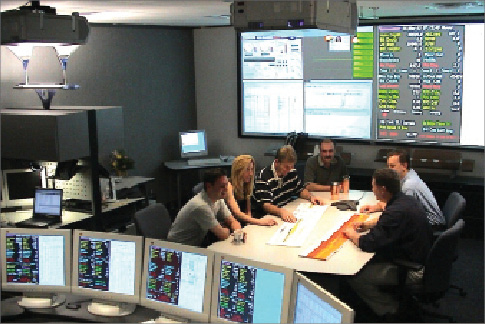Shell puts resources to work to improve well delivery times, accelerate learning curves

The use of optimization engineers and performance-optimizing technologies such as root-cause failure analysis and case-based reasoning have helped Shell Upstream Americas to improve their well delivery process and deliver top-quartile wells, said Eric van Oort, onshore gas technology manager, during a presentation at the 2011 SPE/IADC Drilling Conference in Amsterdam on 2 March.
As the company has diversified its portfolio with acquisitions of shale-gas acreage onshore North America over the past decade, the need to drive optimized performance has pushed Shell to look for new approaches to accelerate both well delivery times and the associated learning curves. “From an analyst perspective, independents are seen as swift and agile; early movers in North American gas; having low overhead, low cost; and applying industry standards to well designs and to materials,” Mr van Oort said. On the other hand, international oil companies are often seen as slow moving; late to the North American gas game; having much higher overhead; and using premium, non-standard designs.
“We think this is a bit of an unfair comparison,” he said, explaining that it underestimates the resources that large companies can mobilize to develop technology and apply it in the field to establish a competitive advantage.
To improve well performance, Mr van Oort and his team adopted a range of optimization technologies, including root-cause failure analysis, which primarily targets preventable tool failures and nonproductive time. By making repeat failures unacceptable, the company has reduced tool failures from six a month to less than one a month. “I’m fully open to actually sharing this with the industry, to have an industrywide initiative around this. I see this the same way as we see HSE; it makes perfect sense for us to collaborate. And it will be more important for us as we go to a future where you have more automation and mechanization,” he said.
Mr van Oort’s team also used drilling efficiency optimization and automatic rig activity detection, both related to real-time operations centers. A “horses for courses” approach was taken in delivering these technologies to Shell’s operations because “different operations require different support. It doesn’t make sense to do 24/7 monitoring for land operations,” he said.
Yet another performance-improvement tool Shell used is case-based reasoning. By characterizing and quantifying data related to failure events, such as stuck-pipe events or pack-off events, a “case” can be defined. Then, by comparing real-time data on a well against the “case,” there can be advanced notice of a twist-off hours before it actually happens, Mr van Oort said.
He also urged companies interested in optimizing their drilling performance to begin doing competitive benchmarking, another critical element to obtaining real improvement. Comparing against your own historical performance won’t help, he said. “I think what you really need to do is be brutally honest with yourself and compare yourself against your competition,” then aim for having top-quartile wells.
An essential element of delivering all these technologies to the field has been a team of dedicated optimization engineers. “The biggest problem that all of us have with technology transfer is that most of us throw it over the fence, hoping that somewhere it lands in operations and finds a champion… We inserted the champions right into the well delivery teams… It may seem trivial to you, but it was an essential step to making the whole thing work,” Mr van Oort said.
Using this focus on performance, Shell has been able to accelerate learning curves on shale-gas wells by as much as a factor of three, “and that’s what makes us competitive even in plays that had been dominated by independents,” Mr van Oort said.
More information about this presentation can be found in SPE/IADC 140333, “How to Accelerate Drilling Learning Curves,” by Eric van Oort, James Griffith and Barry Schneider, Shell Upstream Americas, presented at the 2011 SPE/IADC Drilling Conference, 1-3 March, Amsterdam.
Read about Shell’s real-time operations centers here.





Shell Upstream Americas
Eric van Oort,Onshore gas technology manager
I W’D LIKE TO SHARE MY EXPERIENCE IN RTOC IN SAUDI ARABIA ARAMCO FOR CRITICAL WEELL.